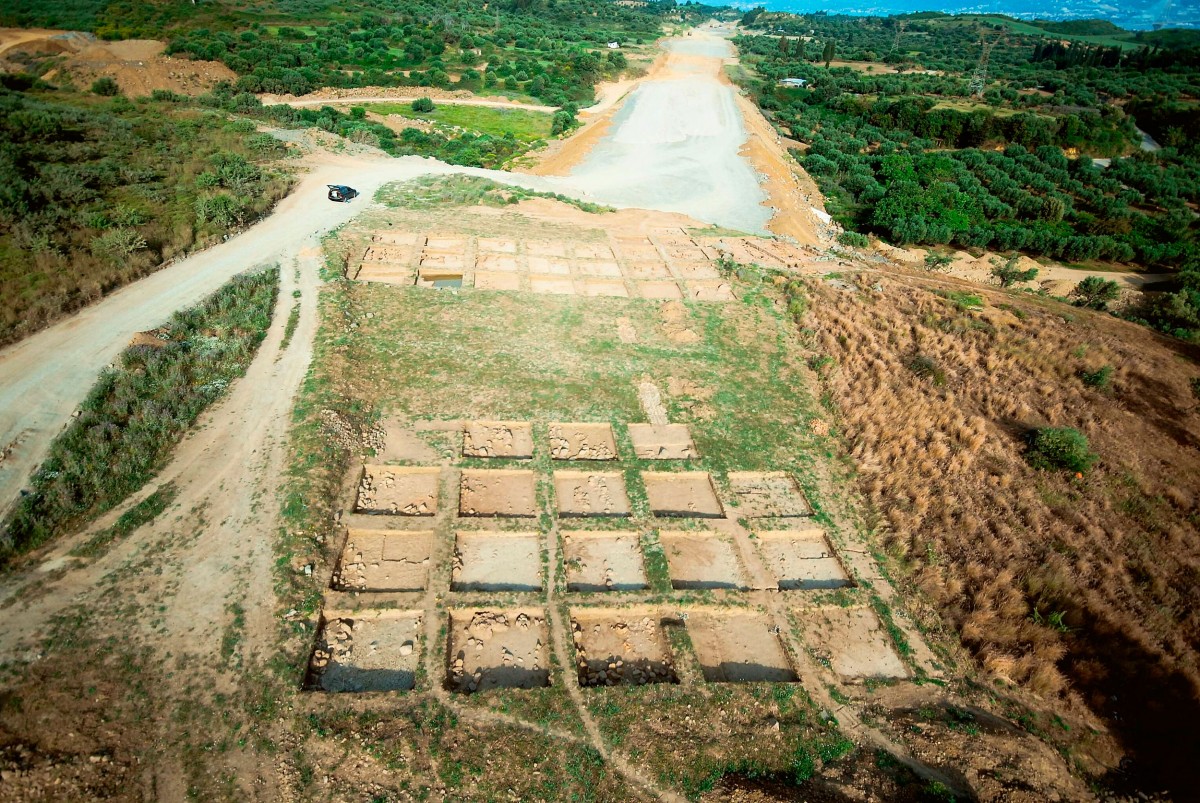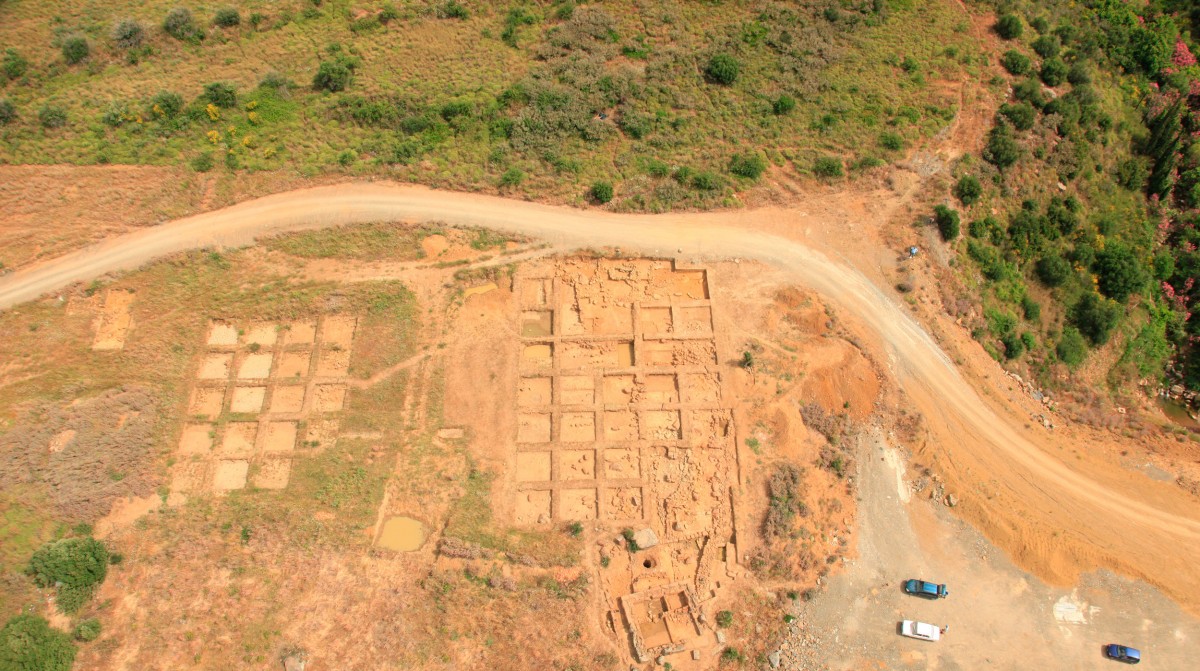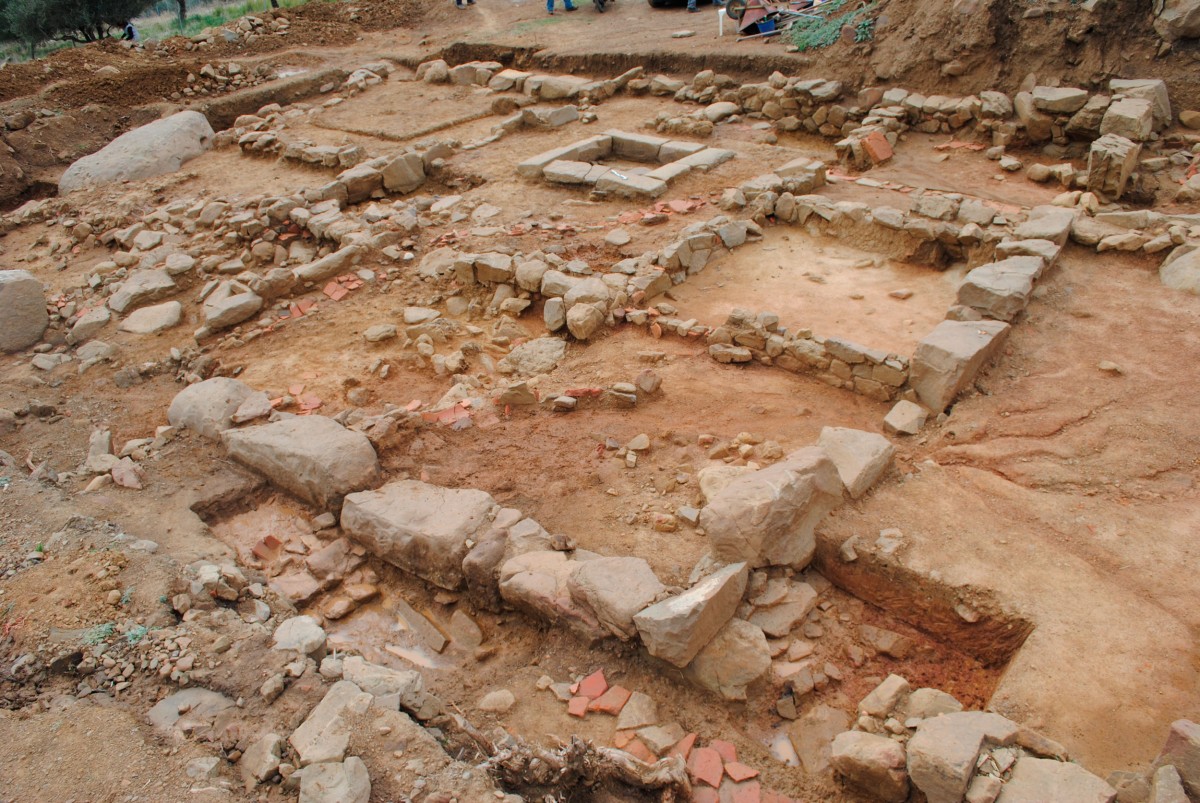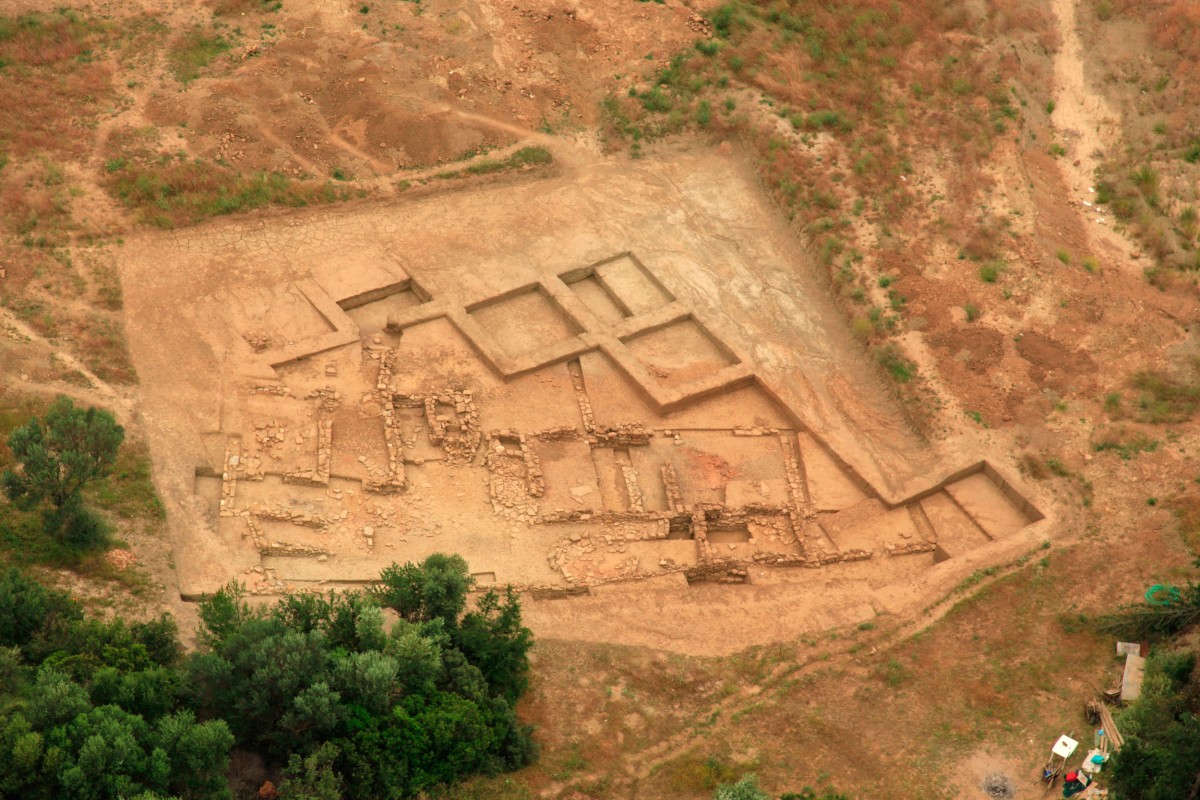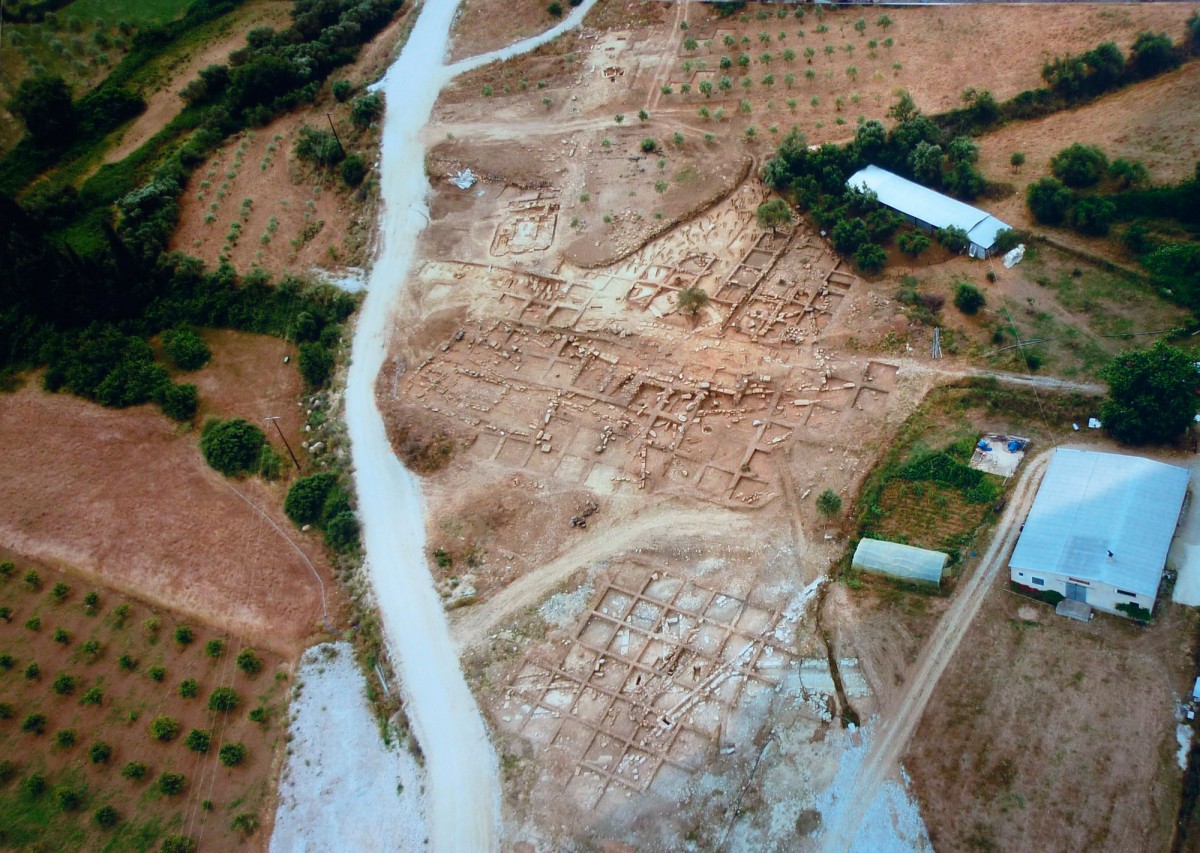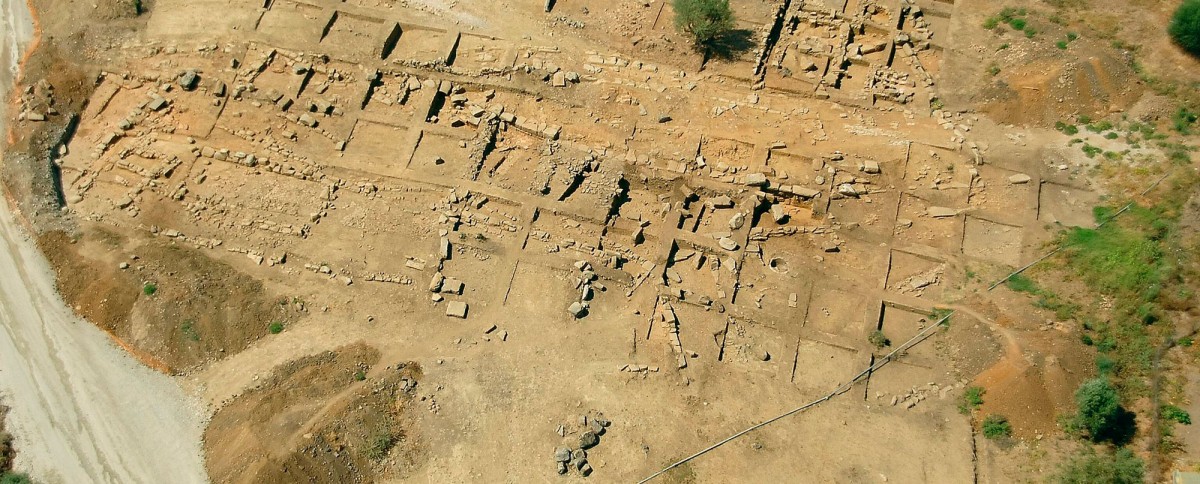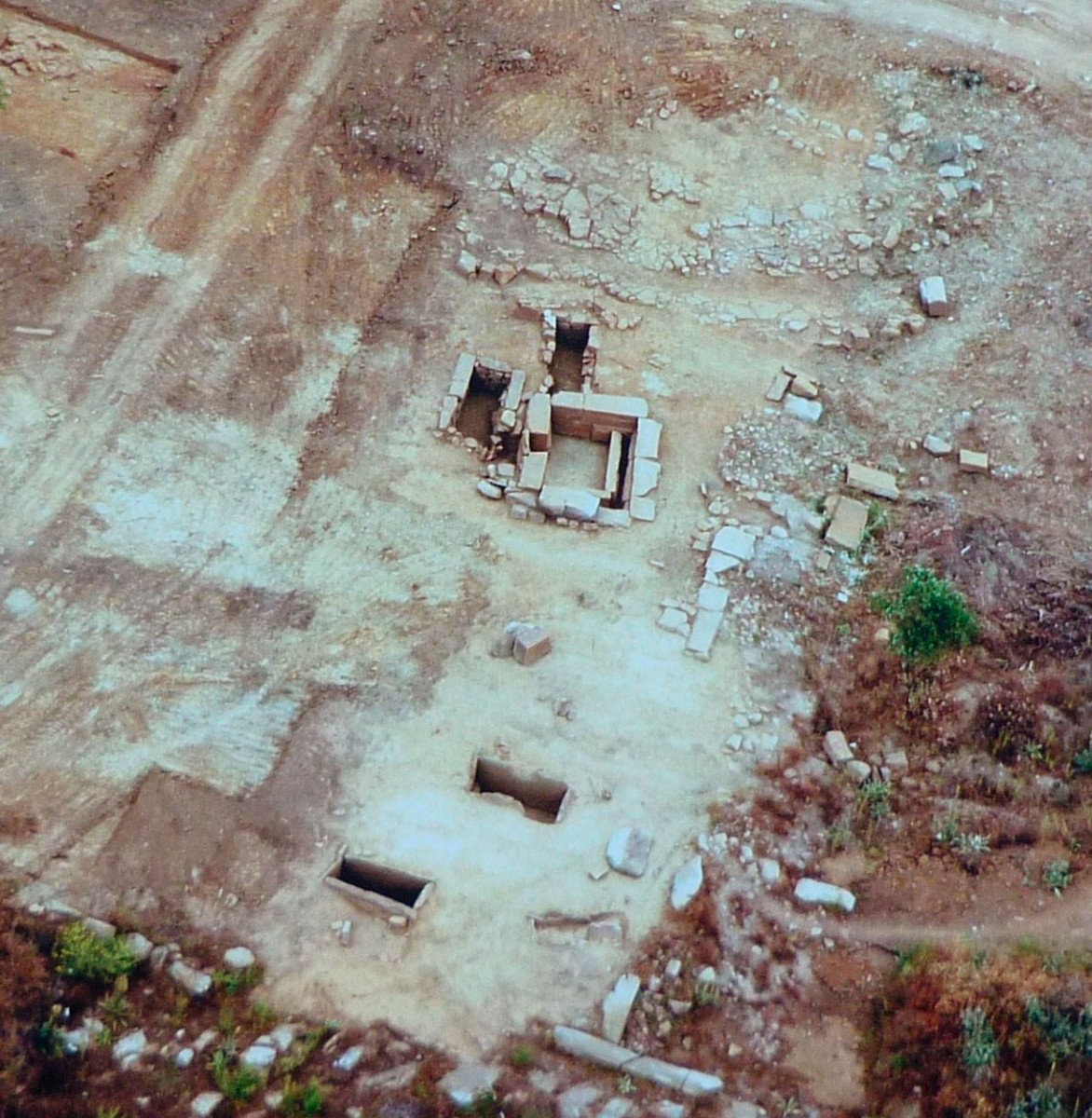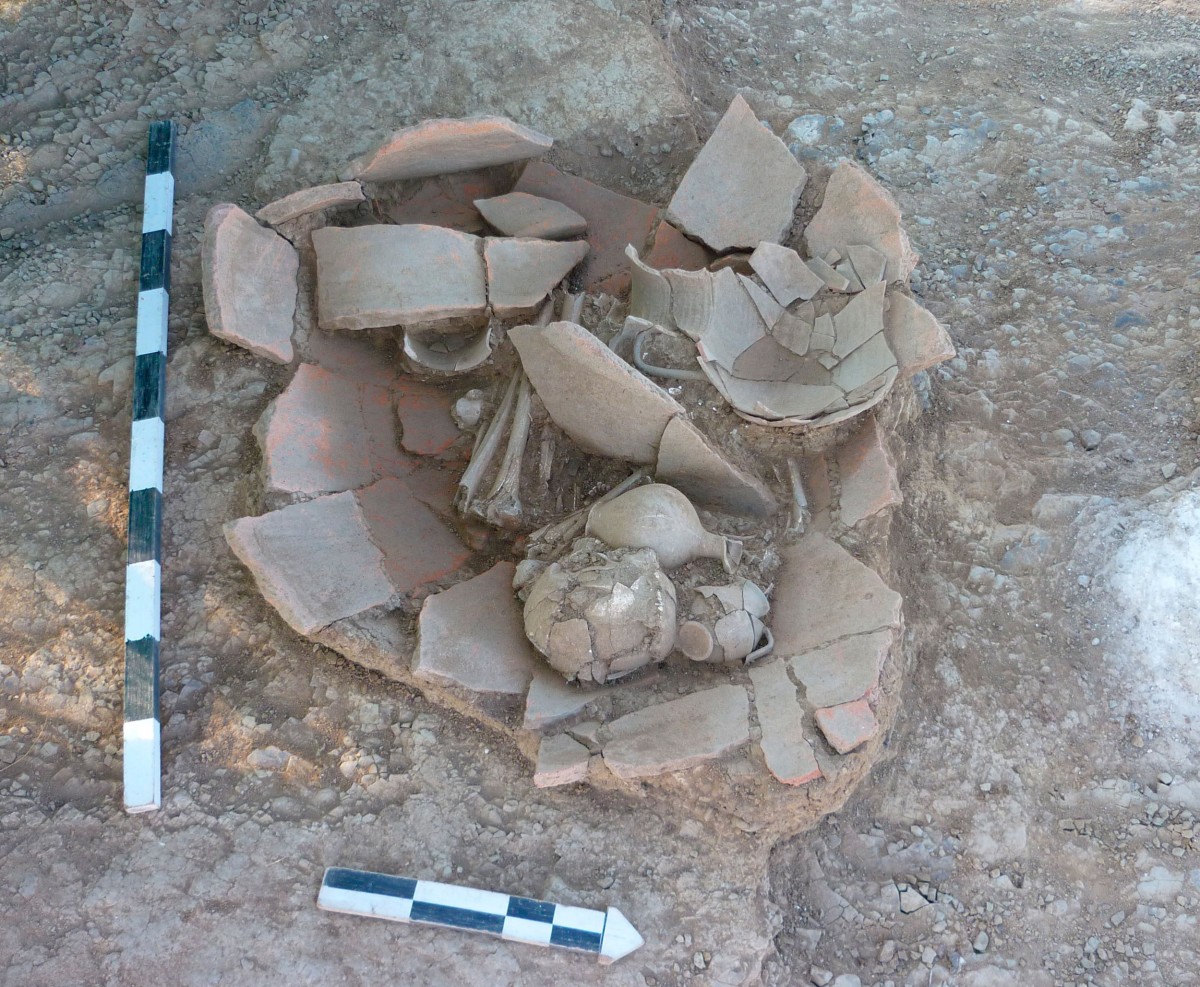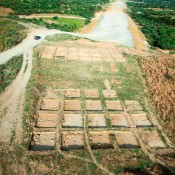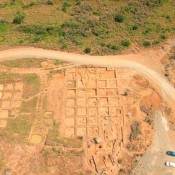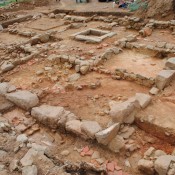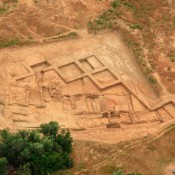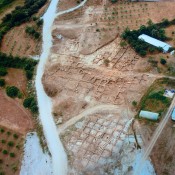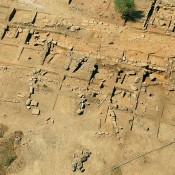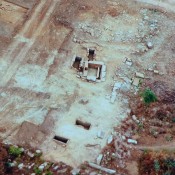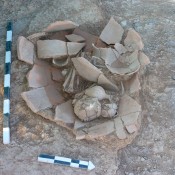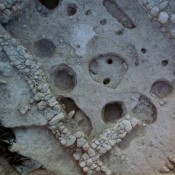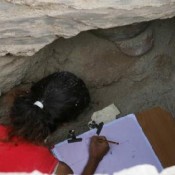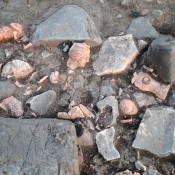The new project of the Ionia Motorway in the district of Aetolia and Akarnania, the largest Regional Unit of the country, provided the opportunity to conduct several rescue excavations on different parts of the road axis. At the present stage the project of the Ionia Motorway consists of two sections: the section from Antirrio to Kefalovryso and from Kouvaras to Komboti. The construction of both these sections started in 2009, when the in between section was completed, the section namely described as “Broad Agrinio Bypass, section Kefalovryso-Kouvaras” (note 1). In the course of the construction of the road that runs for about 90 km through ancient Aetolia and Akarnania, 1.019 trial trenches were first dug, measuring 12,161.77 m in total length, disclosing important archaeological finds. During the last three years, rescue excavations and studies have been carried out at no less than 30 sites, while their finds cover the period from the Middle Helladic period to the first Christian centuries.
New settlements, unknown cemeteries, farmhouses and workshops, city and rural sanctuaries are included in the new data, which have already changed the archaeological map of the region. The completion of the excavations but also the investigation of areas where the preliminary trial studies have not yet been carried out, due to the pending acquisition procedures, will hopefully offer new evidence and shed more light on the history of the two ancient nations, the Aetolians and the Akarnanians, who were active in the western borders of the Greek world.
In the present article a short presentation of the excavation results will be attempted, bearing in mind that in most cases the excavation process is still going on. At present excavation research is carried out on various fronts covering a total area of 53.000 sq.m. In addition to the permanent staff of the 36th Ephorate of Classical and Prehistoric Antiquities, there is a participation of additional staff of 170 persons specializing in different activities (archaeologists, restorers, designers, technicians, workers), engaged for the excavations. Archaeological investigation within the framework of major of minor public projects is being financed, in accordance with law 3028/2002 “On the Protection of Antiquities and by and large of Cultural Heritage”, by the project owner and following approval by the central services of the Ministry of Culture and Sports.
The first section of the Ionia road passes through an area of great archaeological interest. Along the road axis, running from south to north, first we meet ancient Makyneia, followed by the Gavrolimni valley which lies between the mountains of Paliovouna and Varasova, and finally, ancient Kalydon where is located the important sanctuary of Artemis. In such an area it was therefore expected to find new archaeological sites, concerning either settlement or funerary remains. Moreover, in the same area passed in antiquity the road which beginning from Epirus went down and reached Naupaktos and the gulf of Patras, being the principal road connecting Nicopolis with Patras. That was the road which secured the communication between Aetolia and the Northwestern Greece. It seems that this road passed very closely to the Laphrion sanctuary of Kalydon, reached the western downslopes of Varasova and the Gavrolimni valley, and went up the southern slopes of Paliovouna where was the most difficult pass. It continued by going down Paliovona and then it passed by the ancient towns of Makyneia, Molykreio, Antirrio and ended at Naupaktos (note 2).
Makyneia, «Rizo» locality (fig.1)
From the beginning of the Ionia road, at the extension of the Rion-Antirrion bridge, and up to the 14th km approximately several remains have been unearthed in two areas mainly, those of Makyneia and Gavrolimni (note 3).
Extensive remains of a settlement came to light to the southwest of ancient Makyneia (note 4), in the «Rizo» locality, between two waterstreams (fig. 2). The excavation started in the year 2009 and still goes on until today, considering that new buildings but also remains from earlier phases of the settlement in deeper layers are constantly being found. That particular excavation is one of the greatest carried out within the construction of the Ionia road. It covers an area of 32.000 sq.m, where have vome to light great parts of an unwalled settlement, which most likely was part of ancient Makyneia. The excavation works have disclosed until now roads and parts of at least 19 building complexes and also the remains of several other, fragmentary preserved, buildings and terrace walls (fig. 3). The habitation is spread out on several terraces with no regular plan. From the material collected until now it appears that the area had been inhabited from the end of the 6th until the 2nd century BC, but there has been a prehistoric settlement dated in the Middle Helladic until the Late Helladic period, best represented by the late Mycenaean phase.
Among these buildings which have until now been studied, prominent position is taken by a complex dated to the Classical period and multi-spatial buildings of the Hellenistic period of the type having a central room with a hearth, a type considered as characteristic of northwestern Greece (note 5). A monumental tower made of stone bricks, built into the northeastern part of the settlement, is of particular interest. It obviously formed a fortified dwelling built at a crucial spot, considering that it overlooks the whole area. Similar towers are to be found in Attica (note 6), but also in neighbouring Aetolia.
There is a sufficient number of movable finds from the settlement and they are of particular interest. They mainly consist of decorated vases, plain vases of everyday use, various small objects, weights, loomweights, several coins, tools and so on.
Northwest of the acropolis of Makyneia, at the «Loutro» locality, in the year 2010 and while carrying out the same project, the remains of farmhouses dated to the Hellenistic and Late Roman period have been investigated. That particular locality is in the area of the tunnel exit of Makyneia, at the northwestern slope of a low hill. The ancient remains shall be considered as lying at the periphery of the ancient town. The most important of them was a large Roman farmhouse dated to the 2nd-3rd century AD (dimensions 17.80×16.80 m); it consisted of ten rooms arranged in four parallel lines. One of these rooms contained a built containing vat (note 7). The house had been built over another one dated to the Hellenistic period. The finds coming from the Roman farmhouse consist of several storage jars, a grindstone from an oil press, pestles, grinders, animal bones and a large number of movable finds made of copper and iron, and also lead weights.
Gavrolimni
The Gavrolimni valley, lying between Varasova and Paliovouna, attracted the interest of man already since the Prehistoric times and several important remains of that period have come to light. Further north of the above mentioned sites, in the Chalkeia-Gavrolimni section of the road, important prehistoric building remains of exceptional interest have been investigated. They consist of two big, wide-spaced building complexes that belong to the settlement of the Middle-Late Helladic period, which has been earlier spotted in the valley of Gavrolimni and is dated to the transition from Middle Helladic- Late Helladic to the Late Helladic IIIC period (note 8). The first complex, that of the Middle Helladic times, was clearly connected with workshop activities, as shown by the remains of two kilns, one of them round and the other one petal-shaped, which have been found within and outside the building. The complex consists of two buildings, of which the second is the larger, consisting of 11 rooms in total; it seems that is has been destroyed by fire. A large quantity of everyday use pottery has been derived from its investigation.
The second complex, that of the Late Helladic period, is the most representative of the latest Mycenaean phase and is marked by the presence of a large quantity of large storage pithoi, suggesting that it was most probably used for production or trading activities (fig. 4). Though the building has not been preserved in sufficiently good condition, it has been concluded that it disposed of ten rooms, while it had three construction phases. A sufficient number of pottery vases, especially of everyday use, and various small finds were found during its excavation.
At a small distance to the south, there is in progress the excavation of a large, multi-spaced building complex; It has been preserved in excellent condition and is dated to the Hellenistic period.
The earlier rescue excavation of the Ephorate of Antiquities in that area as well as the recent ones, which are here briefly mentioned, clearly show that the Gavrolimni valley is a very important archaeological site, continuously inhabited since prehistoric period, while new evidence keeps coming to light. Most important however, up to now, appears to be the prehistoric habitation following the discovery of the extensive remains of a settlement of that period.
Kalydon and its wider area
The third large excavation, which was carried out on the first section of the Ionia road, Antirrio-Kefalovrysso, was in the area of the Aetolian city of Kalydon, a town of particular importance located on the Aetolian coast, which had known great prosperity due to its favorable geographical position. Obviously outside the city’s walls smaller settlements belonging to the town had grown. One of these settlements has been investigated at the “Hondreika” locality, near the tunnel of Kalydon, which has already been constructed. Work on it started in 2009 and was completed in 2011.
The site is near the modern village of Aghios Georgios by Evinohorio, on the road to Messolongi, to the right of the old National Road, and extends on the slopes of a low hill northeast of the Kalydon’s fortification wall, at a distance of about 1 km from the main east gate of the town. Parts of the city’s fortification wall are visible from the excavation site. That side of the wider archaeological site is next to the Evinos valley, and it seems that since antiquity and until now this region has been of vital interest as an arable land area. The excavated area was agricultural land, mainly planted with olive trees.
The excavation has covered a total area of about 20.000 sq. m on several levels; the borders between them were marked by terrace walls of later dates. The extensive archaeological remains cover several periods of time, from Geometric and Hellenistic up to late Roman and post- Byzantine times. The foundations of the buildings rest on the natural sandstone soil of the area (flysch), which also forms the main building material of the monuments that have been unearthed. In the years 2009 and 2010 work has been carried out in all the sections into which the area had been divided, bringing to light mainly buildings and a bath complex (note 9).
The finds in the total area of the excavation also consisted of several supporting walls, a part of the Hellenistic and Late Roman cemetery, a building complex with a bath of the late Roman period, consisting of at least five rooms, of cisterns, a three-aisled basilica and a large Christian cemetery (note 10). Seven buildings in total have been investigated, constructed of large stone ashlars; they have supplied a large number of Hellenistic pottery vessels. Part of an ancient road also came to light; it went from NW to SE and it was dug into the natural rock, bearing signs of later phases. The interesting point is that the ancient road has been discovered to be right under the present rural road which had been used by the inhabitants until recently, before the Ionia road works had started.
The state of preservation of the ancient remains is not particularly good, as most of them have been kept on the level of their foundations (fig. 6). Moreover their fragmentary condition does not allow us to define the exact use of the buildings, at least for the time being and until the study of the material recollected has been completed. However, from a preliminary examination of the material and the excavation data it can be concluded that the cores of most of the buildings belong to the Hellenistic period, while some of them had been used until the Late Roman and Byzantine years, having undergone several alterations, repairs and extensions.
The cemetery investigated next to the settlement included several tombs of various periods, dating to the Geometric and the Hellenistic periods and up to the Christian era. The tombs have been located at about the same level, at a relatively shallow depth beneath the surface of the ground. Among them of special importance is a large tomb of Macedonian type dated to the Hellenistic times. It was discovered in 2009, while supplementary research was carried out in the year 2011 (note 11). It is built with large, rectangular, chiselled sandstone in the pseudo-isodomic trapezoid system; it has been preserved up to three stone high. The entrance door in the middle of the northwestern long side was sealed by a slab of sandstone. The tomb had been looted in the past. However it rendered a large number of finds, while during recent research in the room of the funeral beds some vases and a golden coin have additionnaly been found.
Around it, nearly touching it, several tombs dated to the Christian and Hellenistic times have been discovered (fig.7). The latter are two cist graves with their four sides covered with vertically placed slabs, one on each side, without however covering slabs. Plaster remains have been located in both tombs, while the long sides of one of them were entirely covered with plaster. The tombs had been robbed and their contents were found to be disturbed, the result being that only a few bones and finds were discovered scattered around them. Underneath one of them the skeleton of a dog lying on its side was found. In the interior of the tomb the finds consisted of a few bones, sherds from a variety of vases with signs of burning, one loomweight but also part of the body of a clay figurine.
At a short distance, two children’s tombs, a cist grave and a pithos grave, dated to the Geometric period have been discovered, having a different orientation than the remaining tombs (northeast to southwest) (note 12). The cist grave contained a child burial, with the deceased’s body lying on its side in a contracted position and accompanied by several burial offerings. A golden hair ornament stands out among them. As regards the pithos burial (fig. 8), a child’s skeleton was also discovered, lying on its side in a contracted position; the finds collected include six vases, a bronze ring and a bronze nail. Next to these tombs several tombs dated to the Christian era have been found.
In general the finds derived from the cemetery are quite numerous and of interest. In addition to the pottery vases (amphorae, unguentaria, lamps etc.), two small lead pyxides and also a variety of smaller finds, like bronze, silver coins and one golden coin, bronze rings, iron scraper, bronze and iron nails (possibly coming from a coffin), part of a figurine were also found.
It is clear that within the framework of the large public works carried out in Aetolia-Akarnania, a huge excavation operation is taking place. Movable and immovable monuments keep coming to light, making the archaeological map of the country richer.
Dr Olympia Vikatou
Archaeologist, Director of the 36th Ephorate of Prehistoric and Classical Antiquities
